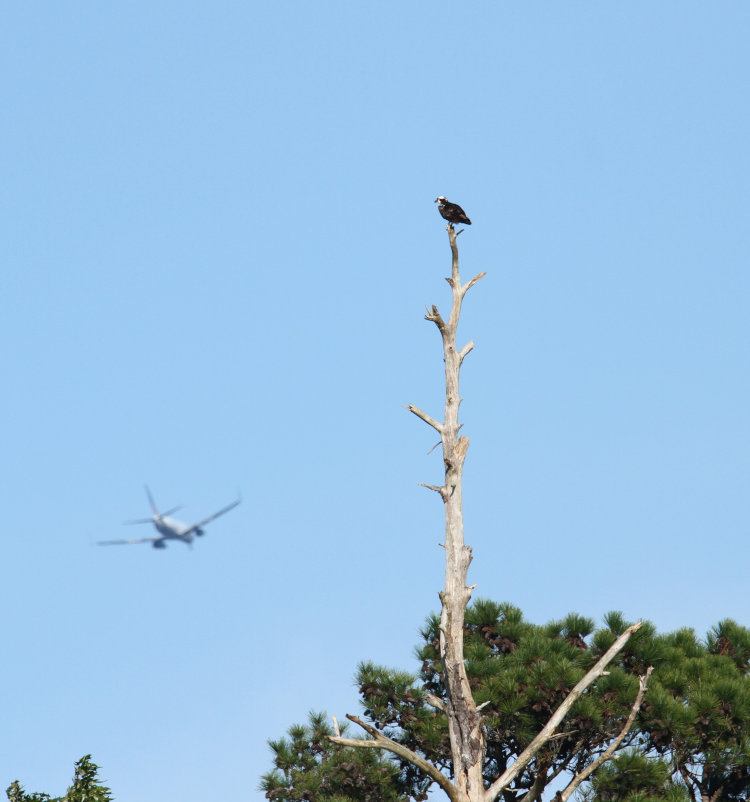
The Simian Mr Bugg and I had an outing to Jordan Lake the other day, once again ostensibly for a sunset that never materialized, but during the run-up to that time, we chased a few bird photos. Yet as the title says, there are fewer here than it seems. Above, an osprey (Pandion hailaetus) remained perched on this dead tree for a long time – you’ll see it again a little later on.
The wind was extremely gusty with numerous apparent thermals rising, so the soaring birds were effortlessly cruising in circles – mostly quite far away from us, but occasionally getting closer, like this one:
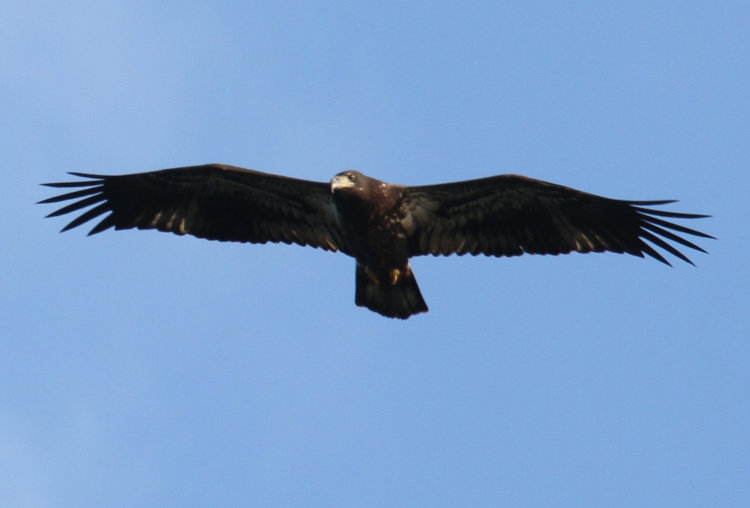
One of several bald eagles (Haliaeetus leucocephalus) that appeared, more than we’ve seen in months, this one is a first year juvenile and thus this year’s brood. Unlike the next one.
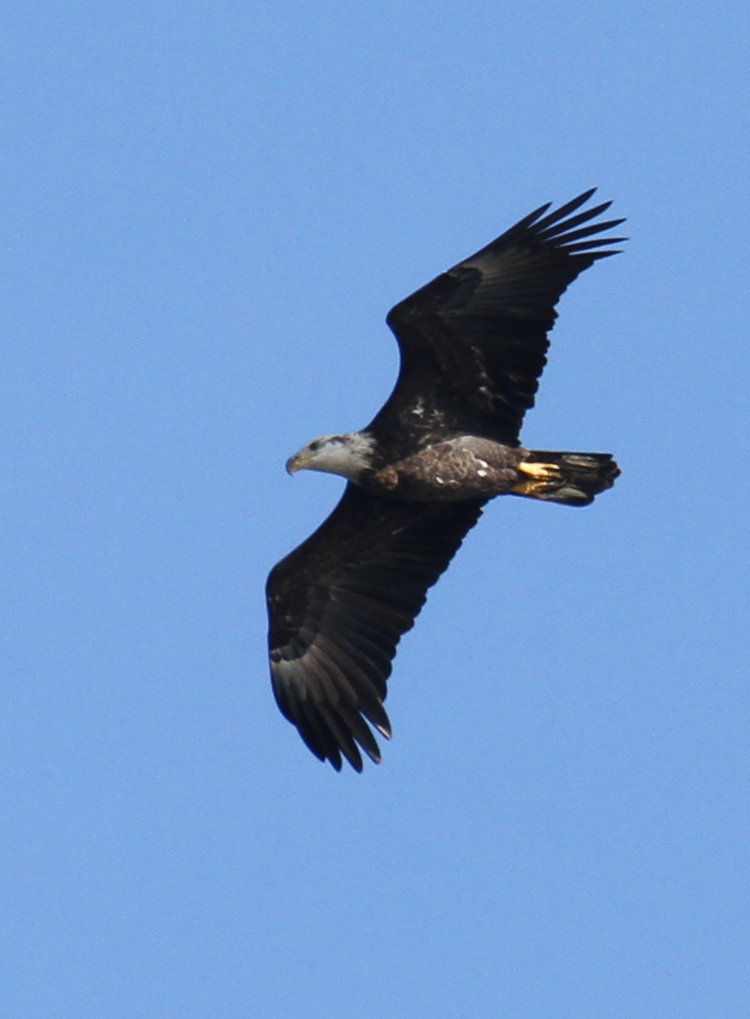
We couldn’t make this out from our vantage point – these are all cropped significantly, even after being shot at 600mm – but this one is just transitioning into its adult plumage; you can see the dark streak along the face and a little leftover mottling on the body. That makes this one four years old, despite it holding up six feathers on the wingtip, trying to lie its way into kindergarten. Not an auspicious start for our nation’s symbol (which is not a collection of handguns, despite what every other country believes.)
We saw no hunting behavior at all, and just one instance of an aborted attempt – no surprise, because the wind made the water very choppy. And I failed to snag a sharp photos of it, but here it is anyway:
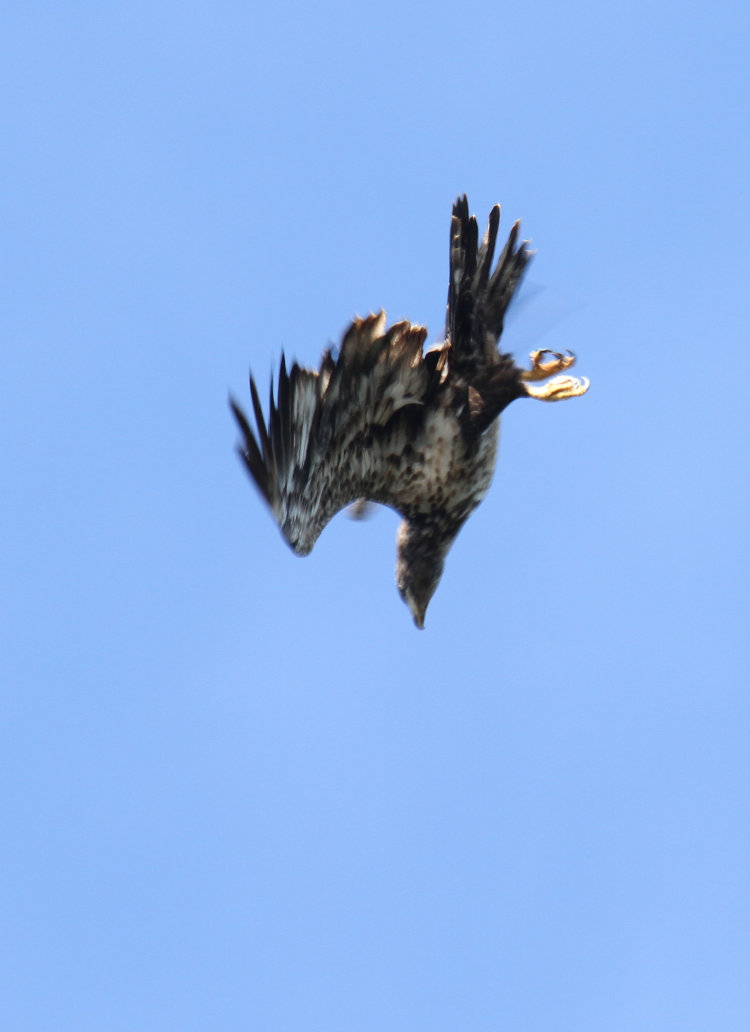
That coloration makes this one a second year juvenile – no, I didn’t manage any photos of a third year juvie. But I did get a much better photo of this same one, the showcase shot:
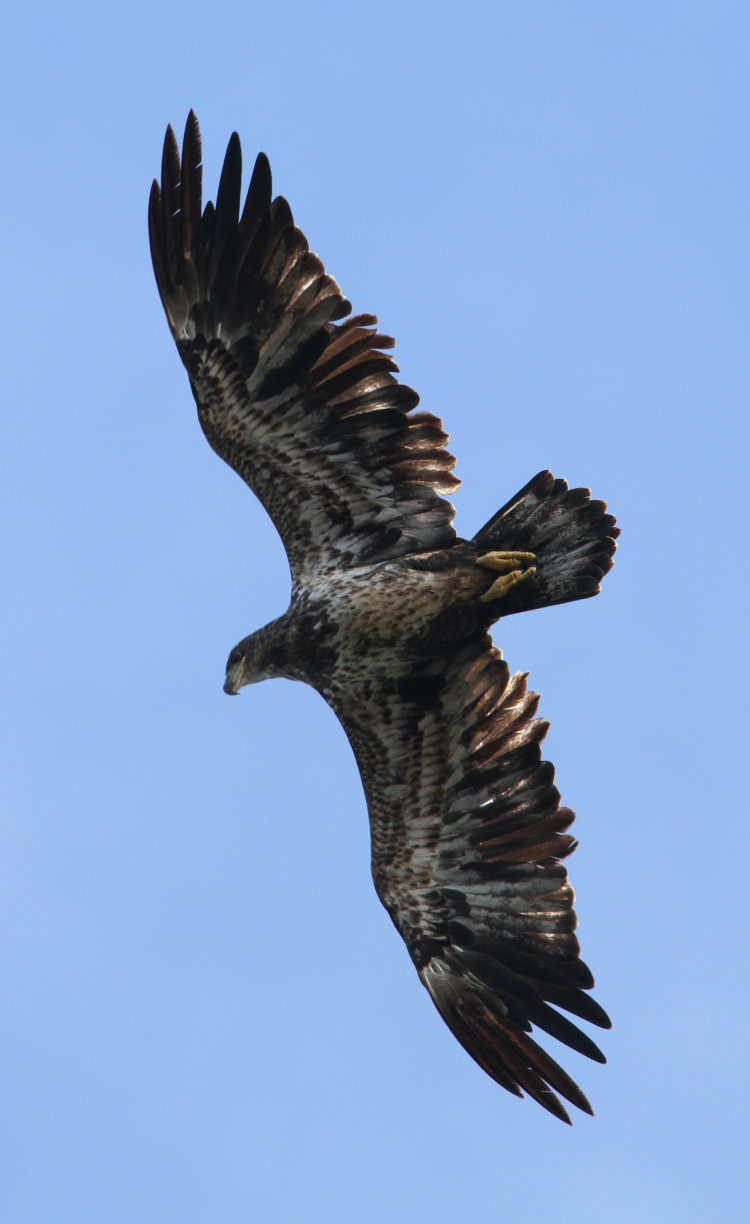
Can’t complain about this one – well, yes, I can, because it’s in the middle of molting and there are gaps and lots of uneven wing feathers. You can see the number four primaries (out at the wingtips) just sliding in, while there are two patches of feathers on each wing that are a little shorter, indicating that they came in only a little earlier than the number fours; four feathers (each wing) a little inboard from the tips, and then three more after three longer ones intervening. As noted before, birds generally molt out matching feathers on each side to maintain equal lift and balance, but this is a lot to have lost at close to the same time.
The osprey were also active, including one that suddenly appeared nearby with a fish, having snuck the capture past us.
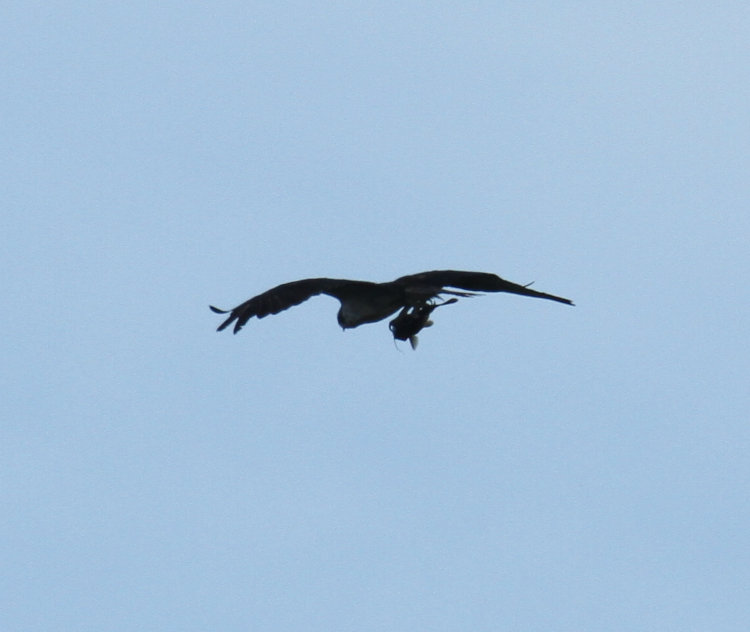
Breeding season is past, with all the young having left the nest and out on their own now, so this one was not making a beeline back to the young, instead almost lazily climbing higher in wide circles – not sure why. But it gave me the opportunity to do several frames as it did so.
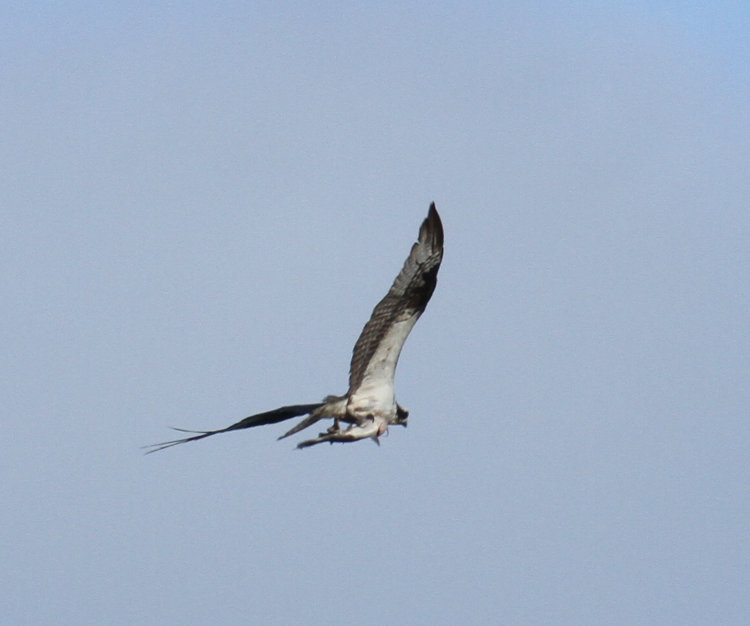
Just enough detail to make out that it’s a catfish, and it might have been taken from the small pond that adjoins the lake in this region, since it was shielded from the wind by surrounding trees and thus considerably smoother, easier to see through the surface.
One osprey flew along in a straight line in the distance, and passed within sight range of the one perched on the dead tree shown in the opening pic. That one took flight after it, though well behind, but they caught a thermal not too far away that began bringing them closer to us, and they drew closer to each other as well. We watched, and sure enough, they engaged in a territorial dispute:
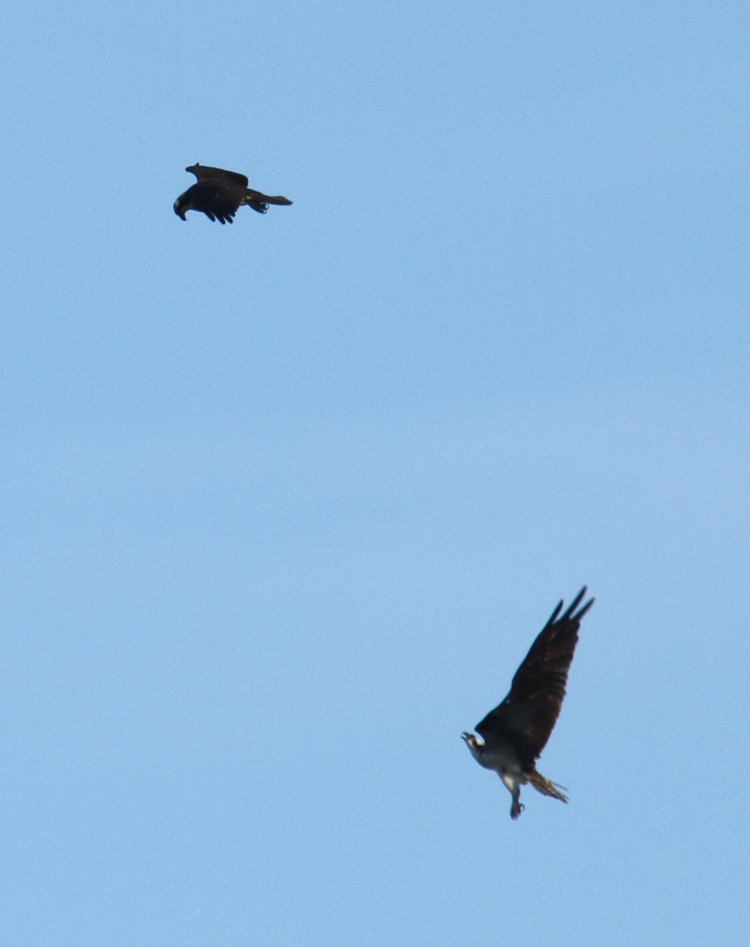
Again, still at a great distance, so this was the best that I got. But the feet being down is a hint, since ospreys (most birds, actually) normally fly with them tucked well up behind them, and drop their legs only when they’re needed – and they ain’t no fish up that high.
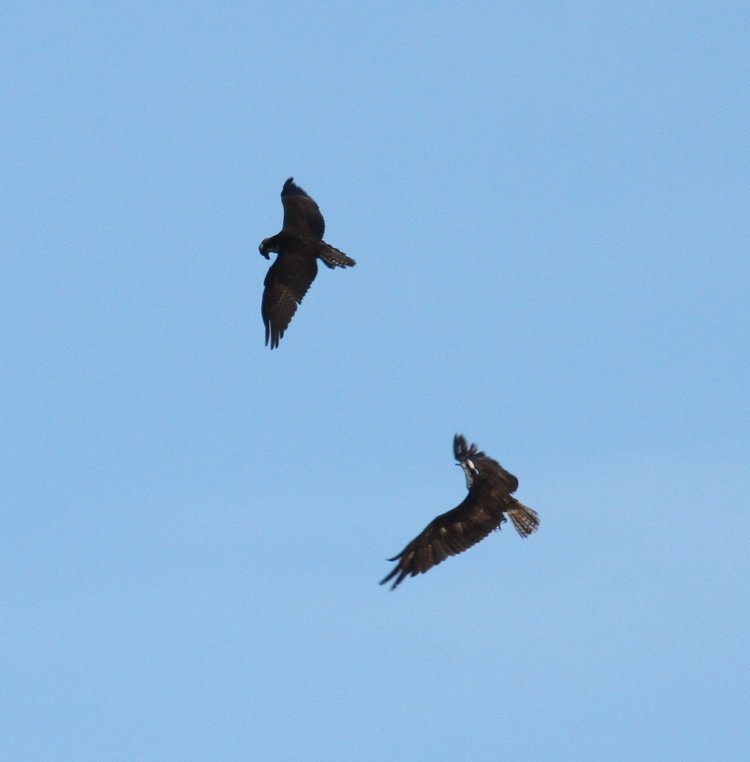
The angles of the heads is a telltale, too – they’re paying close attention to each other.
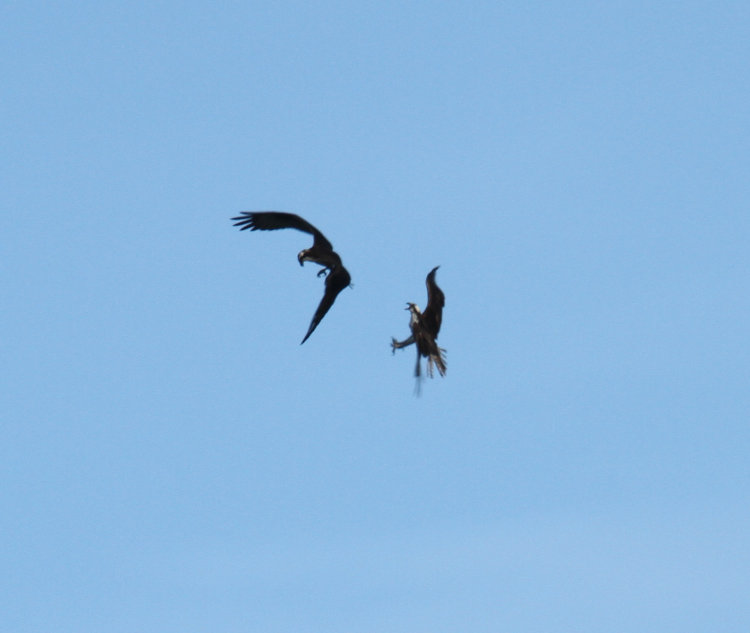
A clash, some dodging, some aerial maneuvers… but something was amiss. Instead of both wheeling around each other into combat positions, or one of them hightailing it out of the area, they both continued on in the same directions (still circling with the thermal,) remaining in reasonable proximity. And in fact, the lower one repeatedly did a sudden twitch and dodge every time the upper one drew close, even when no aggressive acts were in evidence:
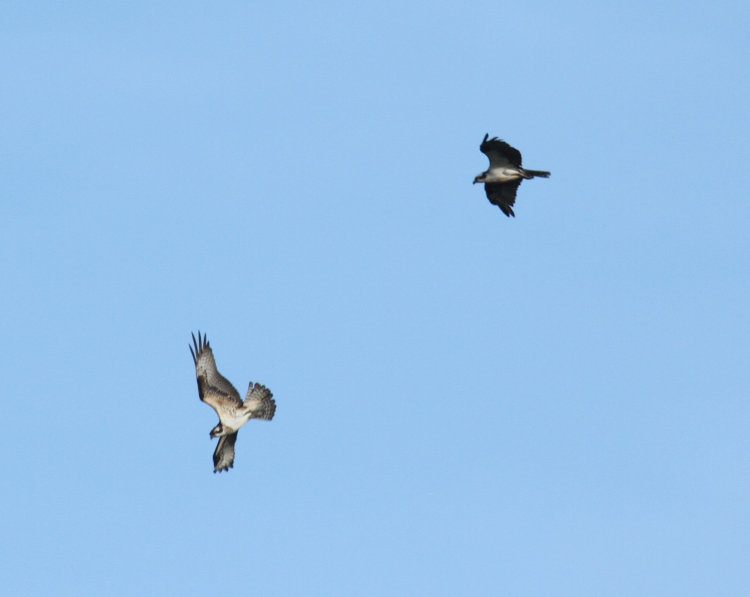
This, more than anything, convinced me that these were siblings and simply engaging in mock battle. And since this was in the general vicinity of the nest that we’ve seen numerous times, it’s entirely possible they were raised within it this year. Still fun to watch.
In the opposite direction, the clouds were reasonably dramatic, at least in some patches, and finally an eagle was convinced (through sheer nature photographer willpower) to go do some poses against them.
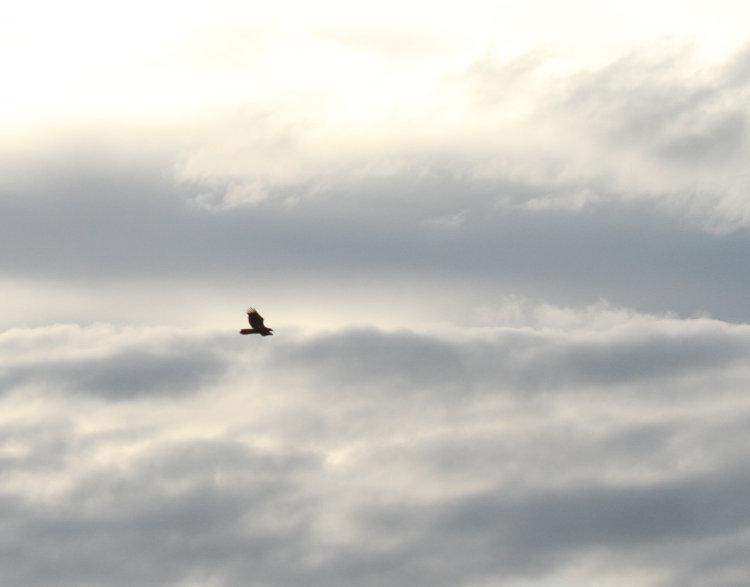
Not as much as hoped, and this was low enough that the eagle soon got close enough (in line of sight anyway) to the powerlines along the causeway, making the frames about useless. How is it we’re still suspending electrical lines from poles up in the air?
A turkey vulture (Cathartes aura) was a little better at posing, even though I wasn’t after one of those – they were enjoying (or at least employing) the thermals too.
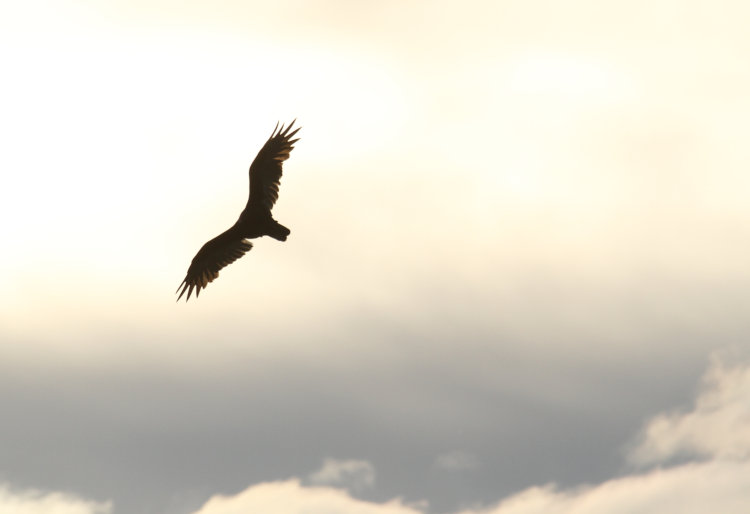
It was getting close to sunset by this point, necessitating that we head over to another portion of the lake that had a better view to the west. This did us no good at all, since the sun refused to break from cloud cover to provide more than the barest hint of colors, but I did think to check out the nest hollow seen over a month earlier – I’ve never had the chance to get back there since. Unfortunately, this was not the time to do so, since the sun was behind it and clouded, but some activity could still be confirmed.
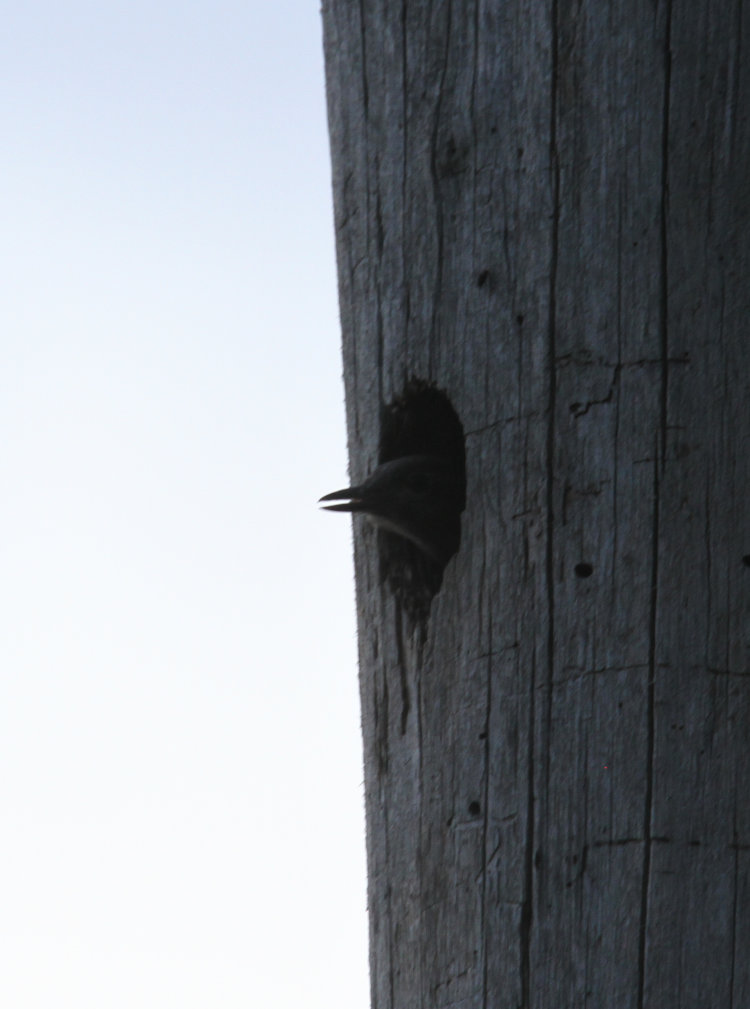
Without the long lens, I would never have been sure that I’d seen this nestling red-headed woodpecker (Melanerpes erythrocephalus) peeking out. And it definitely required 600mm to make out the detail in the next frame:
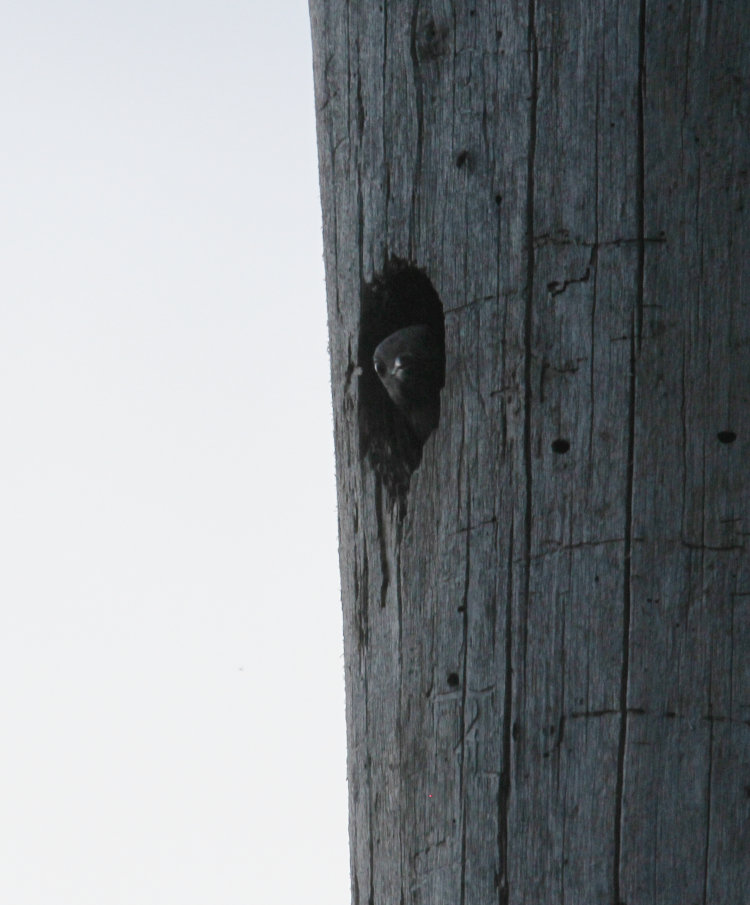
“Yeah, I see you too.”
[I had to lighten this frame up a little, even with the exposure compensation increased to account for the brightness of the sky and the shadowed side of the tree.]
Patience paid off, because the parents were getting in at least one last feeding before settling in for the night.
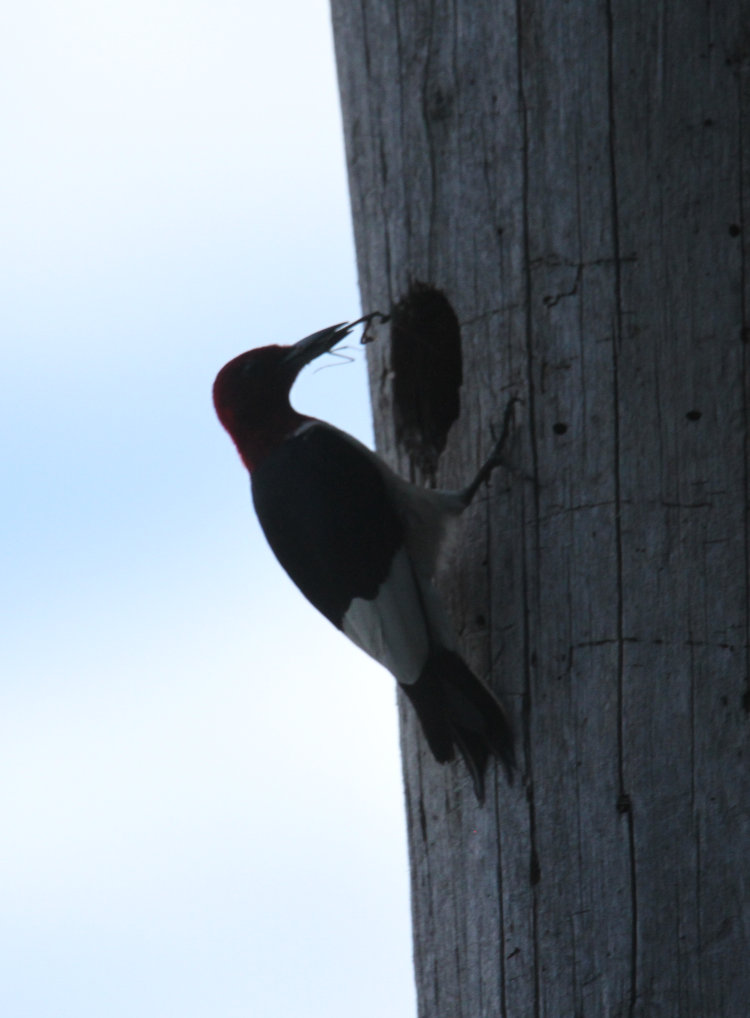
Hey! You’re not allowed to feed your kids praying mantises! Don’t you know that’s illegal?
But yeah, this is one of the reasons why mantis egg cases produce dozens to hundreds of young each spring – only a few will make it to adulthood. Should we root for the mantids, or the woodpeckers? Which is more beneficial to the environment? Actually, we should root for neither, since it’s all a balanced interaction that’s been going on for eons – even when we have a certain fondness for some photo subjects. And the young woodpeckers don’t seem to have a problem with it.
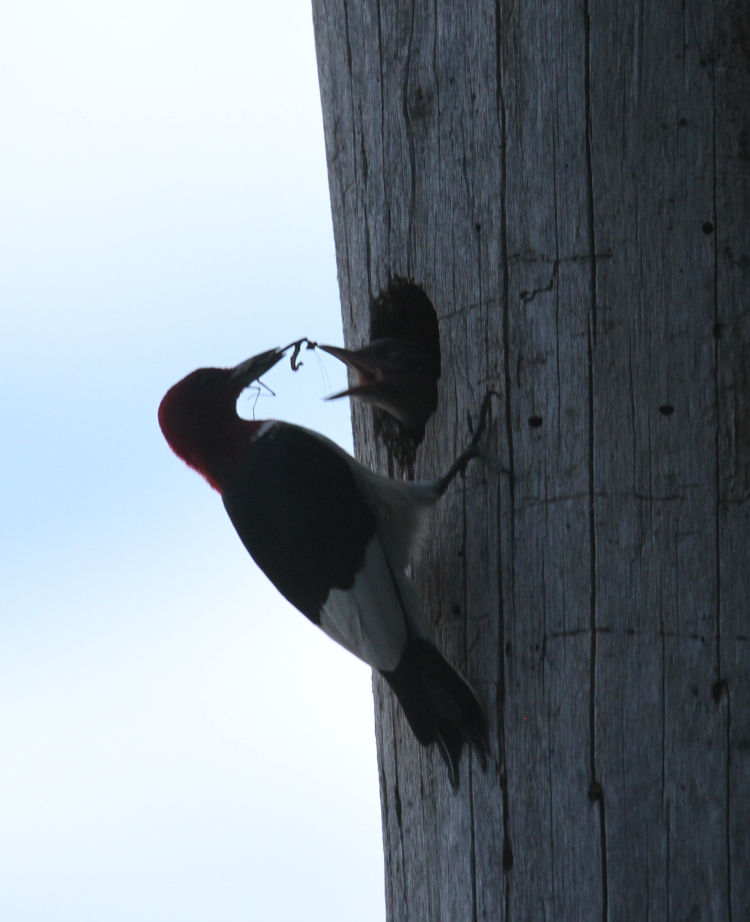
I may see if I can return in better light conditions before the young fledge out of the nest, but I might already be too late, given that this was a couple of days ago. Again, quite busy here, but for good reasons, and my photography only sneaks in here and there. I still have a small collection of previous images to feature too, so they’ll be along.



















































